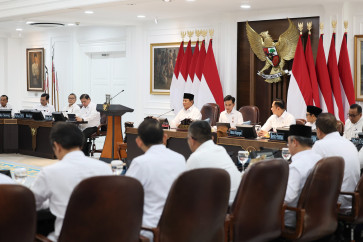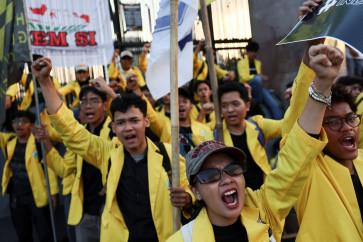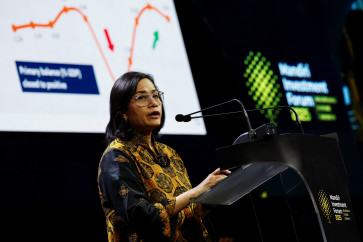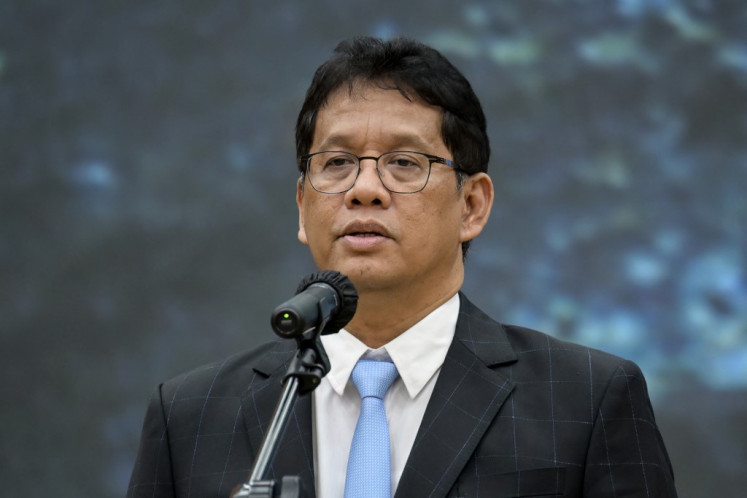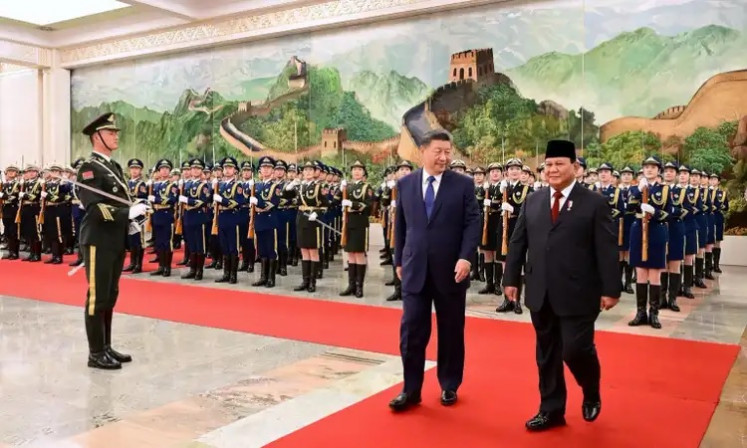Popular Reads
Top Results
Can't find what you're looking for?
View all search resultsPopular Reads
Top Results
Can't find what you're looking for?
View all search resultsWELCOME TO JAVA: Something for everyone on an intriguing island
Java has long stood out as the commercial, economic and political hub of the Indonesian archipelago
Change text size
Gift Premium Articles
to Anyone
J
ava has long stood out as the commercial, economic and political hub of the Indonesian archipelago. One of the world’s most crowded areas, Java is the melting pot of the thousands of islands that compose Indonesia. This blending of peoples and cultures has shaped the island’s unique charms.
During this century, local and international travelers are discovering newfound enjoyment in their “Java jaunts”, thanks to the rapid development of travel-related infrastructure and amenities.
Transportation between cities on the island is easier and more convenient, and the choice of hotel accommodation has expanded to fit all budgets.
Regional and city governments have also jumped on the bandwagon in offering more interesting, diverse and professionally organized programs for tourists, as well as visitors for MICE events who also want interesting places to unwind after a long day of meetings.
Come with us as we visit Jakarta, Bandung, Yogyakarta, Surakarta and Semarang to explore their special qualities and attractions.
Jakarta
The capital city is one of the world’s biggest and most sprawling metropolises, with a teeming day-time population of about 15 million. When it comes to tourism, Jakarta was long considered a poor relation to Bali and other tourist destinations in the nation. “Asia’s most overcrowded, underplanned and least visited capital,” the Indonesian Handbook wrote of the city in 1987.
Some of that sentiment also rings true a quarter century on, but while the “Big Durian” is still confronting issues of urban renewal, it also has undergone huge development in the past decade, some of which make it a more comfortable destination for tourists.
The restaurant and bar scene has become one of the most exciting in the region, with new trends quickly arriving in town. Upmarket malls offer some of the top luxury brand names in the world, combined with the treasure trove of local modern and traditional designers. Accommodation has grown beyond a limited choice of five-star luxury or the traditional backpacker street of Jl. Jaksa to offer a range of quality, mid-range hotels.
There is also its traditional face, to be found in the colonial buildings of the Kota area and in the leafy neighborhood of Menteng, including the famous antique market row of Jl. Surabaya. All the different components of the Indonesian identity come together in the capital, including cuisine, with the smorgasbord of regional foods – Padang, Manado, Sundanese, Ambon, you name it – to be discovered on the streets.
There is so much waiting to be discovered that it is starting to live up to its tourism campaign to “Enjoy Jakarta”.
“I think one thing that we sometimes forget about Jakarta is the people,” says a longtime resident, “Jerry”. “They may be urbanites but they still have that Indonesian concern and consideration for others. And that always helps you have a better travel experience as part of the adventure.”
Bandung
Once a favored posting of Dutch colonists, who dubbed it the “Paris” of Java, cool Bandung has emerged as a major tourist destination this century, especially among Jakartans. The completion of the Cipularang toll road slashed in half the car journey from Jakarta to the West Java capital to only 2.5 hours, and made the mountain town a favored weekend getaway.
Affordable and accessible Bandung has much to offer, from its natural surroundings, traditional Sundanese culture, mouth-watering food (from local fare to a whole range of sweet treats to be taken home with you) and shopping.
Resident Diella Dachlan said that she loved visiting Taman Hutan Raya “Tahura” (Grand Forest Park) on Jl. Juanda because its location was central but safe from motorists.
“Tahura is an interesting place to explore, especially with the Dago waterfall, Japanese cave and Dutch cave. We can also go to Maribaya from there,” she said, referring to a 2.5-meter-high waterfall, hot springs and park.
Another attraction is Mt. Tangkuban Perahu, an active volcano which is located around 25 kilometers north of Bandung. A hot spring at the foot of the mountain is also one of the famous tourist destinations in Bandung.
There are many shopping areas in the city, with fashion items a particular specialty. The many outlets stores of international brands and also those with th creations of local designers draw bargain hunters from other cities in Indonesia and also the region.
Yogyakarta
Stretching from Mount Merapi to the Indian Ocean, Yogyakarta is often called the main gateway to Central Java. This hub of Javanese culture has ancient temples, a royal history, tradition and natural attractions. It has become a thriving tourist destination, including for domestic tourists, mostly young people, who flock to the city on national and school holidays.
Tourist attractions range from the Sultan’s palace to the tourist-friendly handicraft shops of Jl. Malioboro. There are trendy restaurants and cafes for people to while away their time over coffee, as well popular warung angkringan (a local term for the places where ordinary people hang out together).
Akbari, 23, visited the palace during a visit in 2010. “I was really amazed by the grandiose and elegant Javanese architecture. I was particularly intrigued by the life of the king and his family in the past,” the Bandung resident said.
She also visited Malioboro for its lively food culture and bartering with vendors. Although Yogyakarta offers a full range of hotels, the nearby area of Sorowijayan is home to inexpensive accommodation and tourist haunts.
Surakarta (Solo)
Surakarta, better known as Solo, was once a sleepy town. It has recently become one of Central Java’s most charming tourist destinations, acknowledged for its cultural, traditional and heritage sites, such as Kasunan Palace, Pura Mangkunegaran Palace and Sahasra Adhi Pura Hindu temple.
Helping put the Central Java city on the tourism map in recent years has been concerted and coordinated efforts by the local government, fully supported by Mayor Joko Widodo. There is a user-friendly calendar of upcoming events released by the local administration’s communications and information office; on May 11-12, for example, there will be performances of traditional dances of Mangkunegaran Palace, and a local batik-themed carnival on June 30.
The city has also introduced various forms of transportation geared toward tourists, from a 112-year-old locomotive, known as “Sepur Kluthuk Jaladara”, and a double-decker bus for sight-seeing.
Solo has its own special culinary attractions, with various traditional foods and beverages found in almost every corner of the city. For those seeking a wide selection of food at one site, then a visit to Gladak Langen Gogan with the night market program is recommended.
Semarang
Many consider the Central Java capital to be a leading commercial and educational center. But those in the know also recognize it for its special tourist attractions, from heritage buildings (including the legendary Lawang Sewu), old neighborhoods that resemble quaint corners of Europe, museums, temples and beaches.
Its cuisine, bearing Chinese influences in such food as its lumpia (spring rolls), is famous nationwide. In a pulsating city that never sleeps, there are cafes and restaurants open around the clock for hungry foodies.
“Geographically situated in the center of Java, the city has it all, with the sea, the low and high lands, it’s very complete,” said entrepreneur and musician Jaya Suprana, a native of the city.
For Jaya, the biggest cultural attraction is Sam Po Kong temple, located at Gedung Batu, Simongan, because it also represents the rich differences that make up the city’s identity.
“It marks the coming of Islam to Indonesia. It was the place where the famous Ming dynasty seafarer Admiral Cheng Ho, who was Muslim, landed for the first time in Java,” he explained.
— Compiled by Sudibyo M. Wiradji, Bruce Emond, Fanny Hapsari Utomo, Tifa Asrianti and Frederica Emita Indriani


